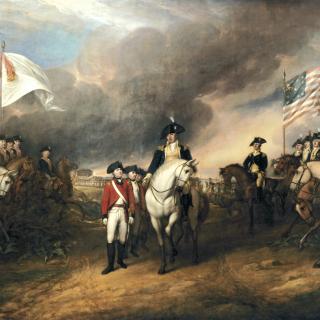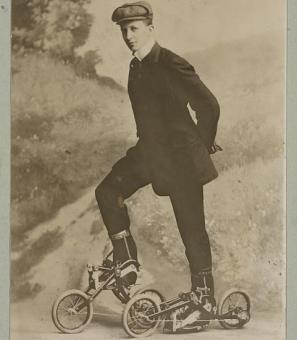Dedication of the Tomb of the Unknown Soldier
On November 11, 1921, three years to the day after the armistice that ended World War I, President Warren G. Harding presided over the dedication of the Tomb of the Unknown Soldier in Arlington National Cemetery. It was an emotional affair for Washington and the nation.
Three weeks before the dedication, four unidentified Americans were exhumed from French graveyards, and moved to Chalons-sur-Marne for a selection ceremony. On Oct. 24, one American was selected at random by Sgt. Edward F. Younger, and the other three caskets were returned to their resting places in France. The unknown soldier was brought back from France aboard the USS Olympia with an honor guard of eight French ships.[1]
When the soldier arrived in Washington on Nov. 9, he lay in state in the Capitol Rotunda, and an estimated 90,000 visitors came to pay their respects. George Rothwell Brown described the feelings of many in The Washington Post: “No man had ever given more... Youth, fortune, love and fame, his very identity flung away for the county’s sake at the cannon’s mouth, and in exchange an immeasurable immortality, the laurels of the victor, the veneration of the world, the homage of civilization.”[2]
On Nov. 11, the soldier’s casket was solemnly paraded from the Capitol to Arlington Cemetery, accompanied by an honor guard of eight World War I veterans. When the casket arrived at the new memorial, President Harding addressed the large crowd in attendance: “He might have come from any one of millions of American homes… hundreds of mothers are wondering today, finding a touch of solace in the possibility that the nation bows in grief over the body of one she bore,”[3] noting that the memorial was not just about this one man and his unknown family, but the many more who returned without a name.
Right Reverand Charles H. Brent, who had been the Senior Chaplain of the American Expeditionary Forces during World War I, read the burial service. Various luminaries laid wreathes and offered tributes as the casket was lowered into the crypt. When the bugler finished sounding taps, soldiers fired a twenty-one gun salute in final tribute.[4] The Washington Post called the two days of dedication, “an overwhelming manifestation of love and adoration such as this republic has never seen before.”[5]
Today, thousands of people visit the Tomb of the Unknowns every day (the memorial has never been given an official name), to pay their respects and observe the changing of the military guard that protects the tomb 24 hours a day. Since 1921 three more crypts were added to include unidentified dead from the Second World War, the Korean War, and the Vietnam War. (Thanks to DNA testing the Vietnam soldier was identified as United States Air Force First Lieutenant Michael Joseph Blassie and his remains were returned to his family in 1998.)
Not just on Veterans Day, but everyday, the Tomb remains a powerful reminder of those before whose lives passed on in anonymity in service of their country.
Footnotes
- ^ “The Unknown Soldier of World War I” from The Last Salute: Civil and Military Funeral, 1921-1969. United States Army. www.history.army.mil/books/Last_Salute/Ch1.htm (Accessed 11/8/2012)
- ^ Brown, George Rothwell. “Nation Bows at Bier of Unknown Soldier” The Washington Post, November 10, 1921 (Accessed 11/7/2012 on ProQuest Historical Newspapers)
- ^ “President Harding’s Address at Grave of Unknown Soldier”. The Washington Post.November 12, 1921 (Accessed 11/7/2012 on ProQuest Historical Newpapers)
- ^ “The Unknown Soldier of World War I” from The Last Salute: Civil and Military Funeral, 1921-1969. United States Army. www.history.army.mil/books/Last_Salute/Ch1.htm (Accessed 11/8/2012)
- ^ Rothwell, George Brown. “Tribute to Unknown Soldier Stirs Whole Country” The Washington Post. November 11, 1921 (Accessed 11/7/2012 on ProQuest Historical Newspapers)


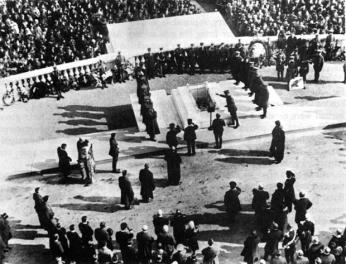
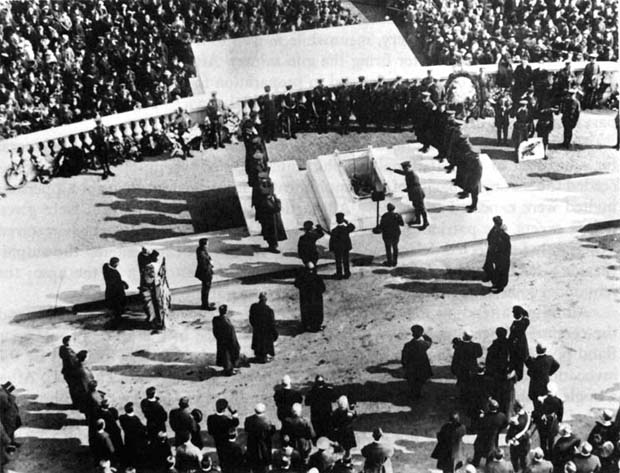
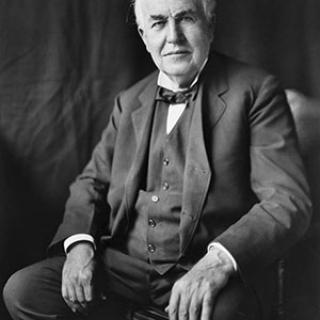
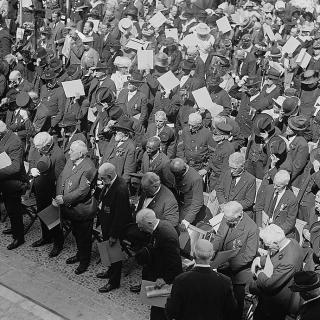
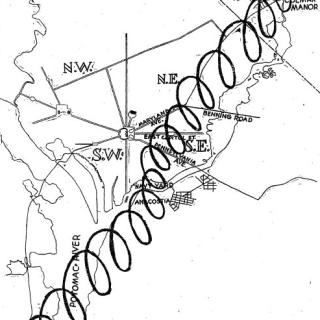
![Sketch of the mythical fuan by Pearson Scott Foresman. [Source: Wikipedia]](/sites/default/files/styles/crop_320x320/public/2023-10/Goatman_Wikipedia_Faun_2_%28PSF%29.png?h=64a074ff&itok=C9Qh-PE1)

